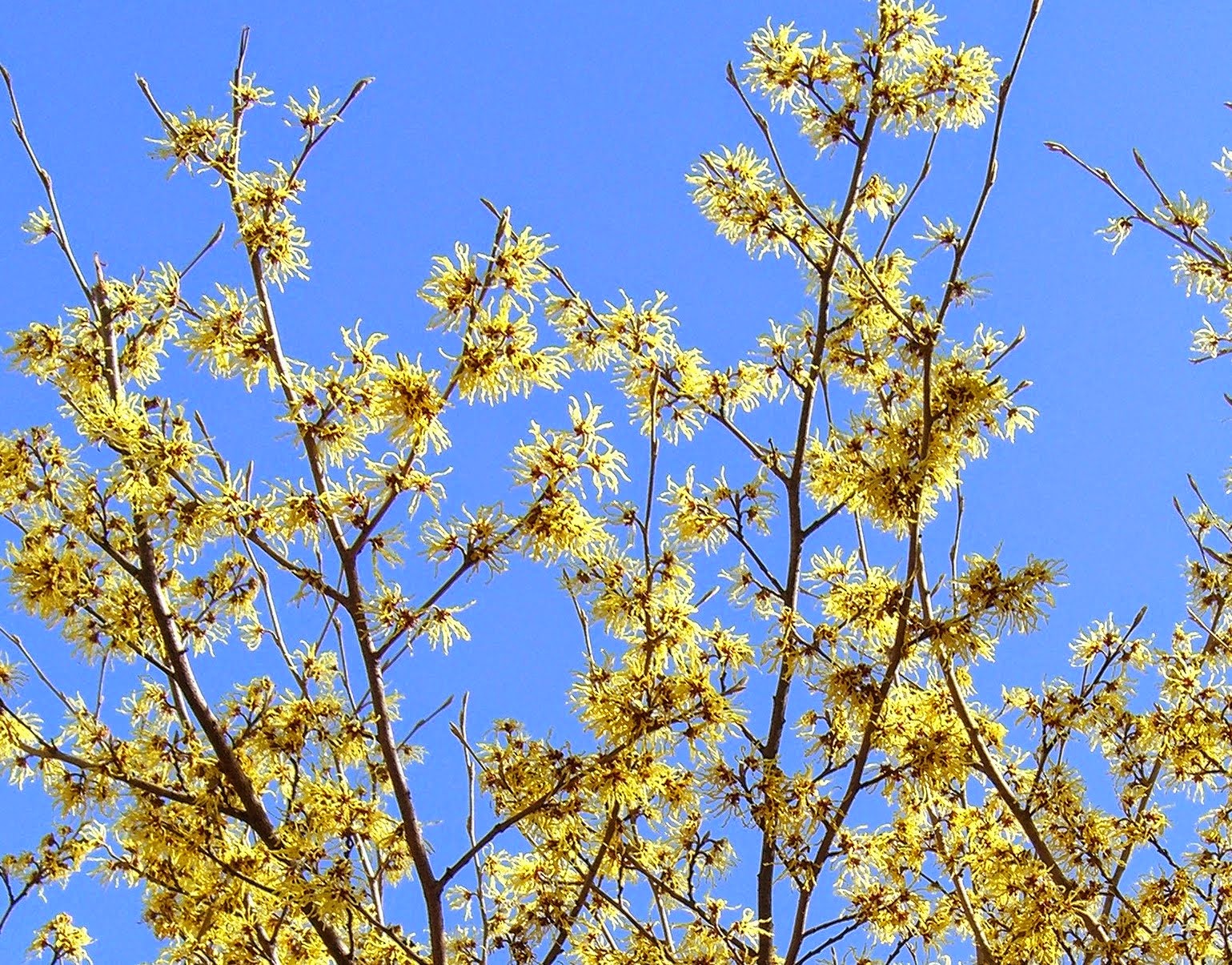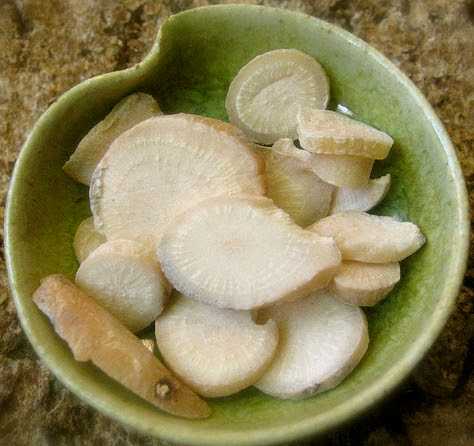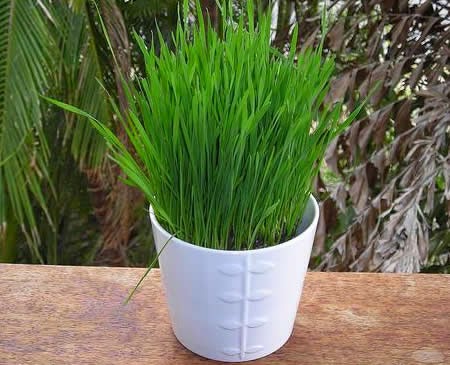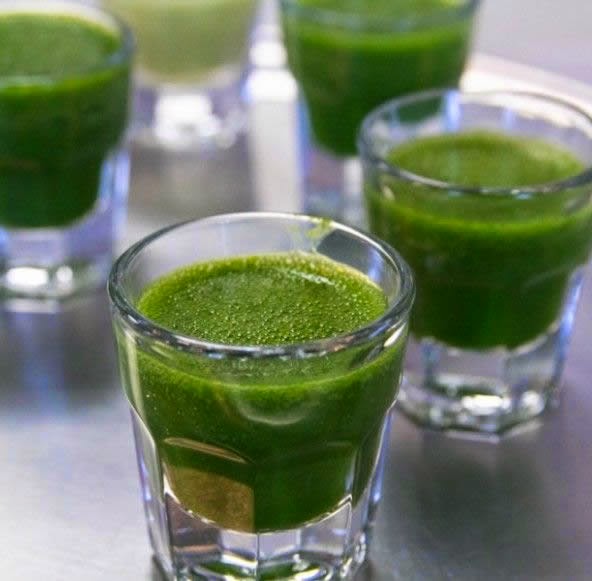Wormwood
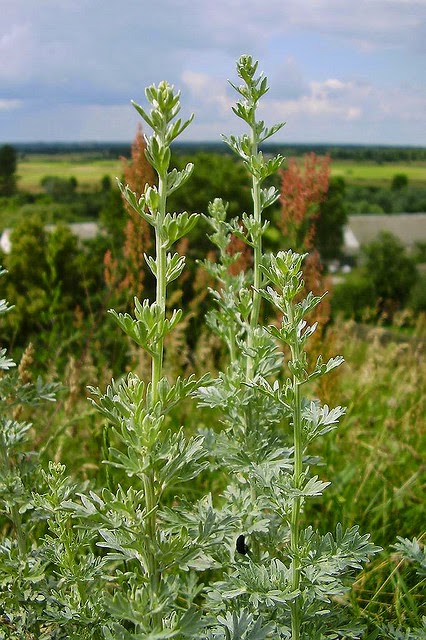 |
| Wormwood |
Wormwood (Artemisia absinthium) is a perennial that is native to Europe and parts of Africa and Asia but now grows wild in the United States. It is extensively cultivated.
Also called shrub wormwood, Artemisia absinthium is a member of the daisy or Asteraceae family. The species name, absinthium, means “without sweetness.” Many species of the genus Artemisia have medicinal properties.
Wormwood grows alongside roads or paths. This shrubby plant is 1-3 ft (0.3-0.9 m) tall and has gray-green or white stems covered with fine hairs. The yellowish-green leaves are hairy and silky and have glands that contain resinous particles where the natural insecticide is stored. Wormwood releases an aromatic odor and has a spicy, bitter taste.
  |
Constituents and bioactivities
Wormwood contains a wide variety of biologically active compounds that contribute to its medicinal value. The constituents of wormwood include:
- acetylenes (trans-dehydromatricaria ester, C13 and C14 trans-spiroketalenol ethers and others)
- ascorbic acid (vitamin C)
- azulenes (chamazulene, dihydrochamazulenes, bisabolene, camphene, cadinene, sabinene, trans-sabinylacetate, phellandrene, pinene, and others)
- carotenoids
- flavonoids (quercitin 3-glucoside, quercitin 3-rhamnoglucoside, spinacetin 3-glucoside, spinacetin 3-rhamnoglucoside, and others)
- lignins (diayangambin and epiyangambin)
- phenolic acids (p-hydroxyphenylacetic, p-coumaric, chlorogenic, protocatechuic, vanillic, syringic, and others)
- tannins
- thujone and isothujone
- sesquiterpene lactones (absinthin, artabsin, anabsinthin, artemetin, artemisinin, arabsin, artabin, artabsinolides, artemolin, matricin, isoabsinthin, and others)
Wormwood is a strong bitter that affects the bitter-sensing taste buds on the tongue that send signals to the brain to stimulate the entire digestive system (salivation, stomach acid production, intestinal tract movement, etc.).
This bitter taste also stimulates the production of bile by the liver and storage of bile in the gall bladder. The azulenes in wormwood have anti-inflammatory activity. The sesquiterpene lactones are insecticidal and have anti-tumor activity.
The toxin thujone is a brain stimulant. Wormwood also has anti-inflammatory, anti-depressant, carminative (relieves intestinal gas), tonic (restores tone to tissues), antibacterial, antifungal, antiamoebic, antifertility, hepatoprotective (prevents and cures liver damage), febrifugal (reduces fever), and vermifugal (expels intestinal worms) activities.
General use
Wormwood has been used in European traditional medicine as a restorative of impaired cognitive functions (thinking, remembering, and perception).
Wormwood is often used as a digestive stimulant. It is helpful in treating indigestion, heartburn, irritable bowel syndrome, stomach pain, gas, and bloating. By increasing the production of stomach acids and bile, wormwood can be useful to persons with poor digestion. It helps persons recover after a long illness and improves the uptake of nutrients.
As the name suggests, wormwood is used to eliminate intestinal worms, especially pinworms and roundworms. It is also used as an insect repellent and insecticide.
More recently, one of the sesquiterpene lactones, artemisinin, has shown promise as a treatment for breast cancer. Artemisinin was extracted from wormwood by the Chinese thousands of years ago to cure malaria, and is presently used in Asia and parts of Africa for that purpose.
Recent experiments have shown that artemisinin is effective against the malaria parasite because it reacts with the high levels of iron in the parasite to produce free radicals. The free radicals then destroy the cell walls of the malaria parasite. Cancer researchers then applied the same principle to target cancer cells, which have a higher concentration of iron than normal cells.
The researchers tested samples of breast cancer cells and normal breast cells that had first been treated to maximize their iron content and then treated with a water-soluble form of artemisinin. The normal cells showed little change, but within 16 hours, almost all of the cancer cells were dead.
Wormwood is also helpful in treating gall bladder inflammation, hepatitis, jaundice, fever, infections, and mild depression. Wormwood may also protect the liver from harmful chemicals and stimulate menstruation or miscarriage. It has been used to treat the pains associated with childbirth, cancers, muscle aches, arthritic joints, sprains, dislocated joints, and broken bones.
Wormwood has a historical dark side: absinthe. This clear green alcoholic beverage, which contains essential oil of wormwood and other plant extracts, is highly toxic and presently banned in many countries. A favorite liqueur in nineteenth-century France, absinthe was addictive and associated with a collection of serious side effects known as absinthism (irreversible damage to the central nervous system).
The toxic component of wormwood that causes absinthism is thujone. Wormwood may contain as much as 0.6% thujone. On the other hand, wormwood soaked in white wine is used to produce the liqueur called vermouth (derived from the German word for wormwood, Wermuth), which contains very little thujone.
Preparations
 |
| Wormwood preparation |
Wormwood is harvested immediately prior to or during flowering in the late summer. All the aerial portions (stem, leaves, and flowers) have medicinal uses. Wormwood is used either fresh or dried.
Wormwood may be taken as an infusion (a tea), as a tincture (an alcohol solution), or in pill form. Wormwood should be taken only under the supervision of a professional. It should be taken in small doses as directed, and for no longer than four to five weeks at a time.
The infusion is prepared by steeping 0.5-2 tsp of wormwood in 1 cup of boiling-hot water for 10-15 minutes. The usual dosage is 3 cups daily, for a period not to exceed four weeks.
Wormwood tincture can be prepared by adding 1.5 cups of fresh, finely chopped wormwood or 8 tbsp of powdered wormwood to 2 cups of whiskey. The herb and alcohol mixture is shaken daily and allowed to steep for 11 days. The solids are strained out and the tincture is stored in a tightly capped bottle in a cool place.
This tincture may be used externally (to relieve pain) or internally. Ten to twenty drops of tincture are added to water, which is taken 10–15 minutes before each meal. As with the infusion, wormwood tincture should not be taken for longer than four weeks.
Wormwood preparations are usually sipped because the strong bitter taste is an important component of its therapeutic effect on stomach ailments. The bitter taste of wormwood infusion or tincture may be masked with honey or molasses when the bitter action is not necessary, as in the treatment of worms, fever, or liver ailments.
Powdered wormwood is available in a pill form that can be used in the treatment of intestinal worms. An essential oil of wormwood is available for use in aromatherapy; it is toxic if used excessively.
Insect repellent can be made from wormwood by mixing thoroughly crushed fresh wormwood leaves with apple cider vinegar. This mixture is put into a small piece of gauze or cheesecloth. The ends are folded up and tied to make a little bag, and the bag is rubbed over the skin of humans or pets to repel mosquitoes, gnats, and horseflies.
Precautions
Excessive use of wormwood leads to toxic levels of thujone in the body. The long-term use of wormwood oil containing thujone, or alcoholic drinks containing thujone oil (e.g., absinthe) can be addictive and cause seizures, brain damage, temporary kidney failure, and possibly death.
Using wormwood for longer than four weeks or at higher than recommended doses may lead to nausea, vomiting, restlessness, insomnia, vertigo, tremors, and seizures. Women who are pregnant or lactating (breast-feeding) should not use wormwood.
Side effects
Significant side effects are not encountered when wormwood is taken in small doses for only two to four weeks. One report stated, however, that using as much as 1 mL of wormwood tincture three times a day for up to nine months caused no side effects.
The U.S. Food and Drug Administration (FDA) states that wormwood may cause neurological symptoms, including delirium, paralysis, loss of intellect, and numbness of the legs and arms.
The side effects associated with absinthism include auditory (hearing) and visual (seeing) hallucinations; tremors and convulsions; sleeplessness; paralysis; stomach problems; brain damage; and an increased risk of psychological disorders and suicide.





